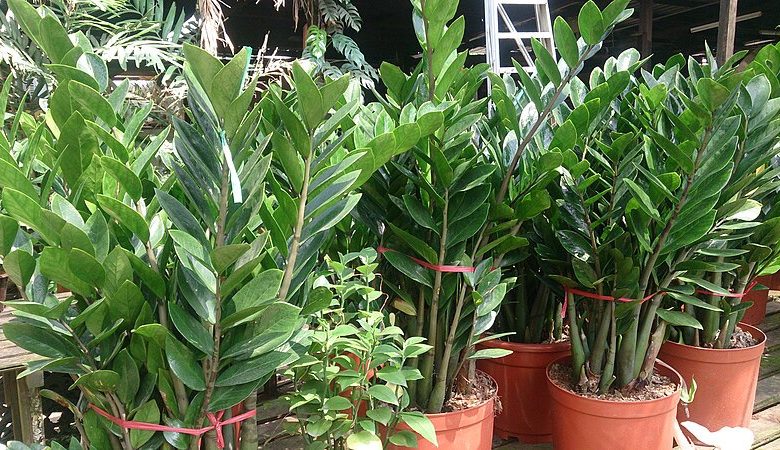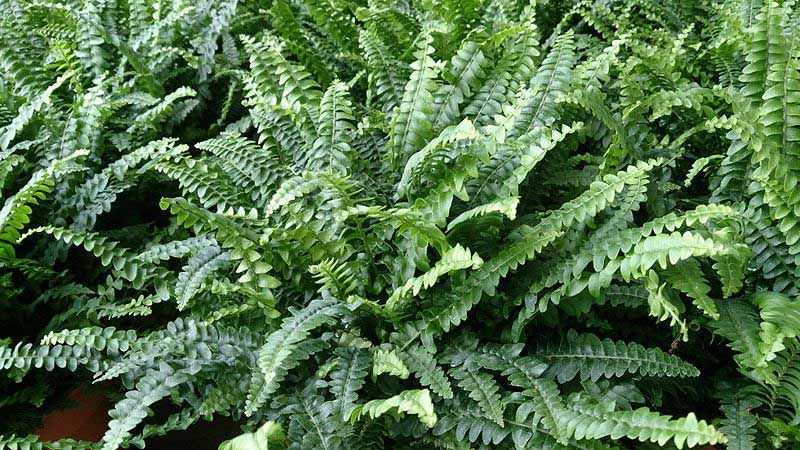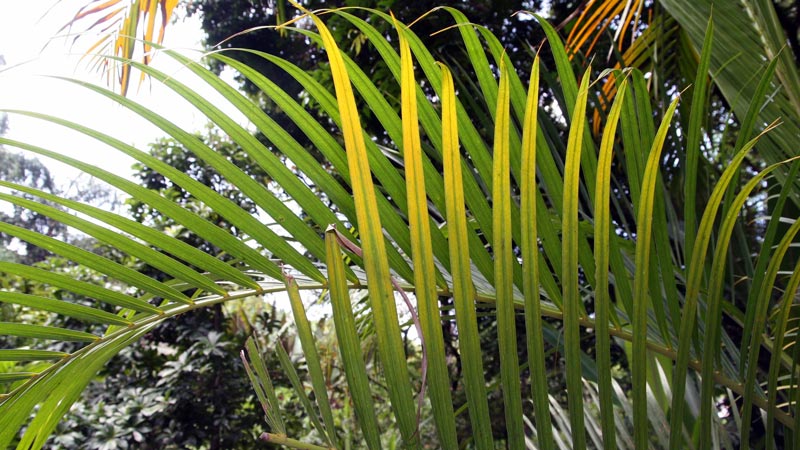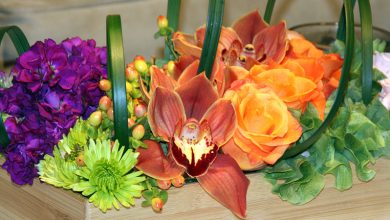The Best Air Purifying House Plants Safe For Dogs

Air Purifying House Plants Safe For Dogs are a perfect blend of beauty, utility, and peace of mind, offering a serene atmosphere while ensuring the well-being of your furry friends. Imagine your living space transformed into a lush oasis, filled with greenery that not only enhances your decor but also actively purifies the air, filtering out toxins and pollutants.
What makes these plants even more special is their safety for your dogs, allowing you to breathe easy knowing your pets are in a secure environment. From the vibrant Areca Palm with its delicate, feathery fronds that brighten any room, to the resilient Spider Plant known for its ability to thrive in various conditions while effectively removing toxins like formaldehyde and xylene, these plants are as functional as they are stunning.
Read More: List Of The Best Indoor Air Purifying Plants
Consider the elegant Boston Fern, whose gentle fronds add a touch of sophistication while also humidifying the air, making it an ideal addition to homes with dogs that may benefit from a bit of extra moisture. For those who appreciate a pop of color, the Pet-Safe Parlor Palm offers a splash of green that is both safe for your four-legged companions and incredibly easy to care for.
Each of these Air Purifying House Plants Safe For Dogs not only contributes to a healthier indoor environment but also complements your lifestyle, enhancing the ambiance of your home while ensuring your pets can roam freely without any risk.
Do Air-purifying House Plants really work?
air-purifying house plants can indeed help improve indoor air quality, but their effectiveness is often more nuanced than some claims suggest. Here’s what the research says:
1. NASA Clean Air Study
- Origins: The idea that houseplants can purify air gained popularity from a 1989 NASA study, which found that certain plants could remove toxins like formaldehyde, benzene, and trichloroethylene from sealed chambers.
- Effectiveness: In these controlled environments, plants showed a significant ability to absorb volatile organic compounds (VOCs) and other pollutants through their leaves and roots, supported by soil microorganisms.
2. Real-World Application
- Scale Matters: The impact of houseplants in typical indoor settings is less dramatic. The NASA study was conducted in highly controlled, sealed environments. In a normal home or office, with air flow, ventilation, and larger spaces, the concentration of pollutants is much lower, so plants would need to be present in large numbers to make a noticeable difference.
- Complementary Role: While houseplants can contribute to improved air quality, they should be considered a supplementary method rather than a primary solution. They can enhance humidity, reduce dust, and provide psychological benefits that contribute to overall well-being.
3. Limitations and Considerations
- Number of Plants: To achieve a significant air-purifying effect, you’d need a large number of plants relative to the size of the room. Some estimates suggest having at least one plant per 100 square feet.
- Pollutant Types: Plants are more effective at filtering out certain types of airborne toxins (e.g., VOCs) than others. They don’t typically remove large particles like dust and allergens, which require other methods of air purification, such as HEPA filters.
- Maintenance: Healthy plants are more effective, so proper care, including regular watering, light exposure, and occasional repotting, is crucial.
Read More: How to Take Care of Hanging Flower Baskets?
4. Psychological and Environmental Benefits
- Stress Reduction: Beyond air purification, plants have been shown to reduce stress, improve mood, and enhance concentration, making them valuable in indoor environments for overall wellness.
- Humidity and Oxygen: Some plants, like ferns and palms, can increase humidity and oxygen levels, which can be beneficial, especially in dry indoor climates.
5. Research Updates
- Recent Studies: More recent studies have suggested that while plants do have a limited ability to clean indoor air, their impact should not be overestimated. They are most effective when combined with other air purification strategies.
In conclusion, while air-purifying house plants do work to some extent, they should be part of a broader approach to improving indoor air quality, including proper ventilation, using air purifiers, and reducing sources of indoor pollution.
 Characteristics of Air Purifying House Plants for Dogs
Characteristics of Air Purifying House Plants for Dogs
When choosing air-purifying house plants that are safe for dogs, it’s important to consider several characteristics to ensure they are both effective in improving air quality and harmless to your pets. Here are the key characteristics:
1. Non-Toxicity to Dogs
- Safe for Ingestion: These plants are non-toxic, meaning if your dog chews on or ingests parts of the plant, they won’t experience harmful effects. Popular examples include the Spider Plant, Boston Fern, and Areca Palm.
Read More: The Best Flower Wall Backdrop Ideas
2. Air Purification Abilities
- Removes Toxins: These plants are known for their ability to absorb and filter out harmful pollutants like formaldehyde, benzene, and xylene, improving the air quality in your home.
- Oxygen Production: Many of these plants also contribute to higher oxygen levels, creating a fresher and more breathable indoor environment.
3. Ease of Care
- Low Maintenance: Safe plants are often hardy and require minimal care, making them ideal for busy pet owners. Plants like the Spider Plant and Parlor Palm thrive with basic care routines, including regular watering and indirect sunlight.
- Adaptability: These plants can adapt to various indoor conditions, from low light to varying humidity levels, ensuring they thrive in different environments without much hassle.
4. Pet-Friendly Features
- Non-Irritating: The plants should not have sharp, spiky leaves or toxic sap that could irritate a dog’s skin or eyes.
- Durability: Given that dogs might occasionally knock over or play with plants, it’s beneficial if these plants are sturdy and can withstand some physical interaction.
5. Aesthetic Appeal
- Variety of Appearances: They come in various shapes, sizes, and colors, allowing you to choose plants that match your home decor while being safe for your pets. For instance, the Boston Fern offers lush greenery, while the Parlor Palm adds a touch of tropical elegance.
Read More: Top 10 Indoor Plants That Need Zero Sunlight
6. Environmental Contribution
- Humidity Regulation: Some plants, like the Boston Fern, naturally add humidity to the air, which can be beneficial for both human and pet health, particularly in drier climates.
These characteristics make air-purifying house plants not only a smart choice for enhancing your indoor environment but also a thoughtful decision for maintaining a safe and healthy space for your dogs.
The Best Air Purifying House Plants Safe For Dogs
When looking for the best air-purifying house plants that are safe for dogs, it’s important to select plants that effectively clean the air while posing no risk to your furry friends. Here are some of the top choices:
1. Spider Plant (Chlorophytum comosum)
- Air Purification: Known for its ability to remove pollutants like formaldehyde and xylene, the Spider Plant is an excellent air purifier.
- Pet Safety: It’s non-toxic to dogs, making it a safe choice for homes with pets.
- Care: Easy to care for, the Spider Plant thrives in indirect light and tolerates occasional neglect, making it ideal for busy households.
2. Boston Fern (Nephrolepis exaltata)
- Air Purification: Boston Ferns are effective at removing formaldehyde from the air and are also great at adding humidity to indoor spaces.
- Pet Safety: Completely safe for dogs, even if they decide to nibble on the fronds.
- Care: Prefers a humid environment and indirect light, requiring regular watering to keep the soil moist.
3. Areca Palm (Dypsis lutescens)
- Air Purification: This palm is excellent at removing toxins like formaldehyde, benzene, and carbon monoxide from the air.
- Pet Safety: Non-toxic to dogs, it’s a great choice for pet owners who want a larger, more dramatic plant.
- Care: Thrives in bright, indirect light and needs regular watering, especially during the growing season.
4. Parlor Palm (Chamaedorea elegans)
- Air Purification: The Parlor Palm helps to filter out toxins and can improve indoor air quality.
- Pet Safety: Safe for dogs, the Parlor Palm is a pet-friendly option that also adds a tropical touch to your home.
- Care: Prefers indirect light and moderate watering, making it a low-maintenance plant that’s easy to keep healthy.
Read More: The 10 Best Flower Decoration On table For Birthday
5. Bamboo Palm (Chamaedorea seifrizii)
- Air Purification: Effective at filtering out benzene, formaldehyde, and trichloroethylene, the Bamboo Palm is a powerful air purifier.
- Pet Safety: This plant is non-toxic to dogs and adds a refreshing, green presence to any room.
- Care: Prefers bright, indirect light and consistent moisture but can tolerate lower light conditions.
6. Calathea (Calathea spp.)
- Air Purification: Calatheas are not only beautiful but also help to clean the air by filtering out toxins.
- Pet Safety: Safe for dogs, Calathea plants are known for their striking foliage and are a great choice for adding visual interest to your home.
- Care: Requires high humidity, indirect light, and regular watering to keep the soil consistently moist.
7. Haworthia (Haworthia spp.)
- Air Purification: While not as powerful as larger plants, Haworthia still contributes to cleaner air and is a great option for smaller spaces.
- Pet Safety: Safe for dogs, this succulent is a low-maintenance plant that’s perfect for busy pet owners.
- Care: Prefers bright, indirect light and requires minimal watering, making it easy to care for.
These plants not only enhance your home’s air quality but also ensure a safe and welcoming environment for your dogs. With a variety of sizes, shapes, and care requirements, there’s an air-purifying plant on this list to suit any home and lifestyle.
incorporating Air Purifying House Plants Safe For Dogs into your home is a thoughtful way to enhance your living environment while prioritizing the well-being of your pets. These plants offer a natural solution to improve indoor air quality, filtering out harmful toxins and pollutants, all while being completely safe for your canine companions.
From the easy-to-care-for Spider Plant to the elegant Areca Palm, these pet-friendly plants not only beautify your space but also contribute to a healthier, more tranquil atmosphere. By choosing Air Purifying House Plants Safe For Dogs, you create a harmonious balance between nature and pet safety, ensuring your home is both a sanctuary for you and a safe haven for your furry friends.








